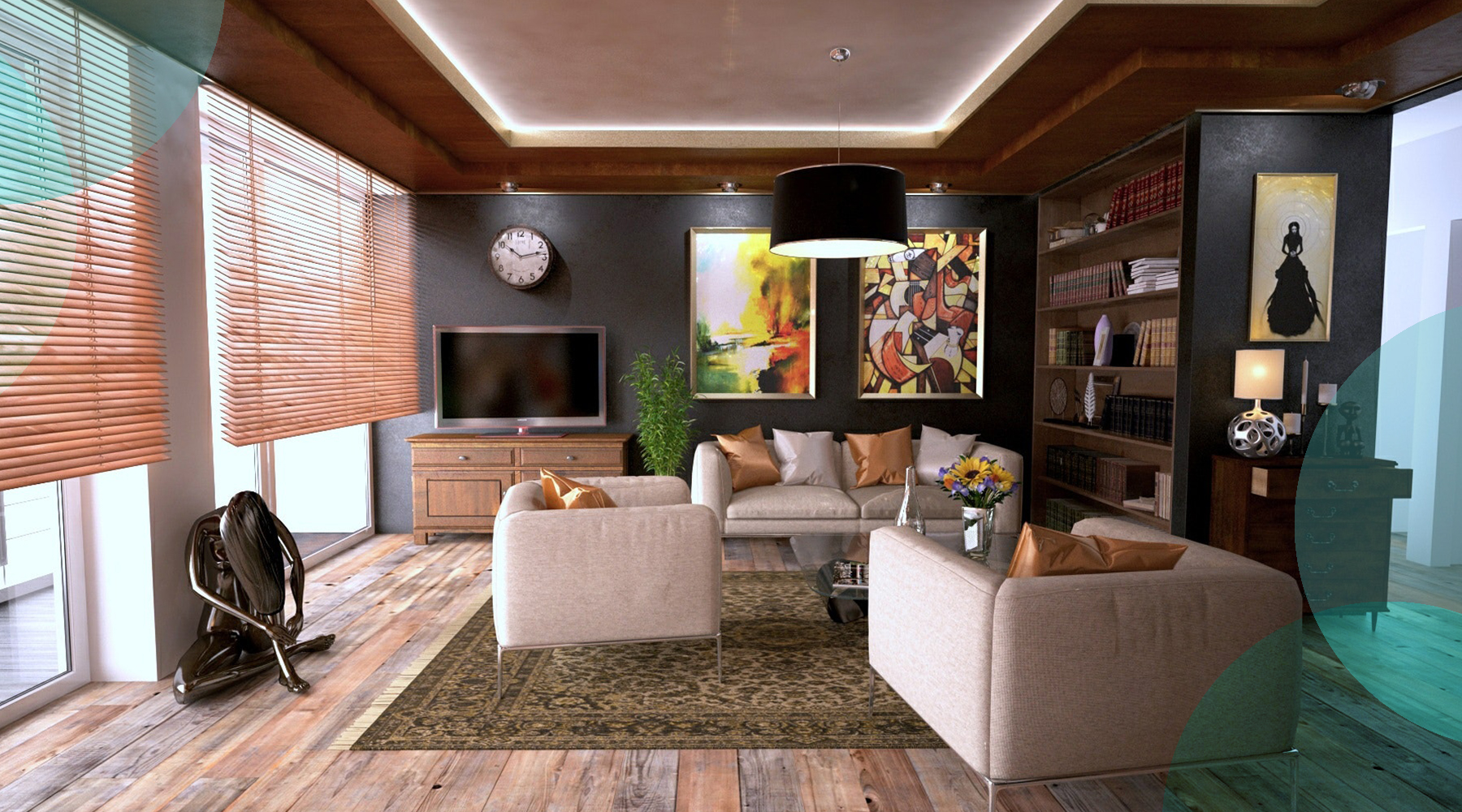Are you tired of living with bare walls? Was the last piece of “art” you bought a poster for your dorm room? Do you think that an art collection is something only rich people can afford? Let’s bust some myths about decorating your home with artwork.
Related: Short on Space? Here’s How to Decorate a Studio Apartment
Why Art?
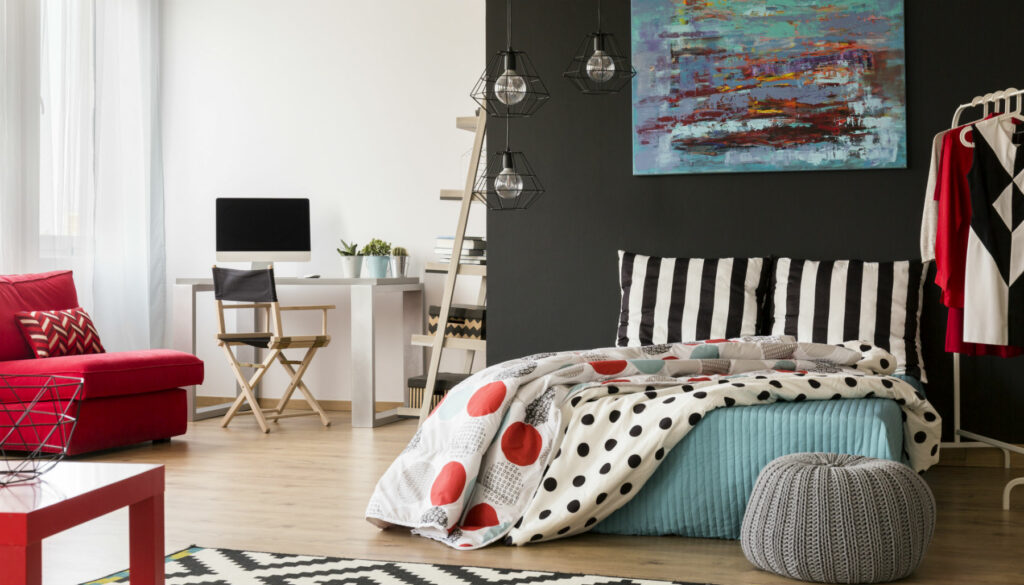
As a lover of art in all its forms, my home is covered in original pieces, vintage finds, and a few of my own creations. Being surrounded by artwork makes me happy. Unlike a mass-market print or trinket from a big-box store, I like knowing that real people used their talents to create something beautiful that I can now enjoy in my home. There’s a sense of connection, of warmth and groundedness, that comes from decorating your living space with artwork. It’s not necessary, in the strictest sense of the word, but I don’t think that making your home into a more pleasant, uplifting space is frivolous, either.
Curating a Collection
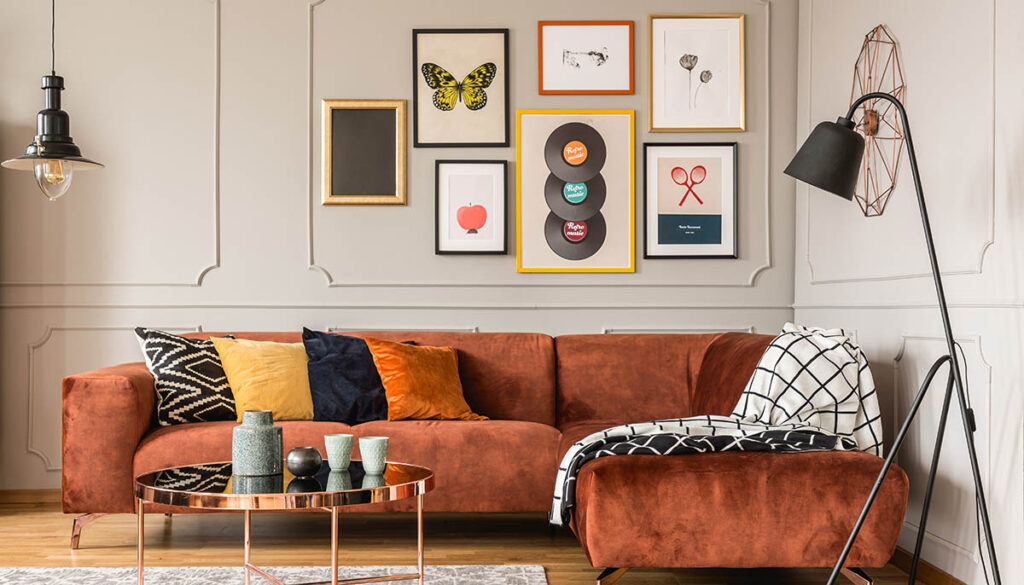
One thing I learned the hard way is that you shouldn’t take home anything and everything that catches your eye. That path leads to visual clutter and a lot of asking yourself, “Wait, why did I even buy this?”
It’s a good idea to start with an anchor piece. When you find a larger piece of artwork that calls your name, you can build a grouping around it. For example, I found a wonderfully decadent pair of large watercolor paintings of “leopards in opulent rooms” (per the auctioneer) a few years ago. They hang over my sofa now, but they’re not alone. I paired the pieces with a few other pieces of artwork in gold frames, as well as a small gilded leopard statuette from Target and a pretty glass vase I found at a thrift store. I picked up a throw blanket in the same jewel tones as the watercolors to tie everything together.
Have a sense of what colors you like, as well as the subjects and media that appeal to you most. You might like pastel flowers and silver accents, or you might be into tribal artwork and carved wood. My mother collects pottery, while I’m more into art glass. My neighbor is into American primitives–stuff that looks like it’s from the 18th century–but another friend loves vintage decor from the 1940s. If we all tried to collect everything, our homes would be a mess. Not only that, but we wouldn’t be able to appreciate the pieces we truly love.
Where to Find Art in Your Budget
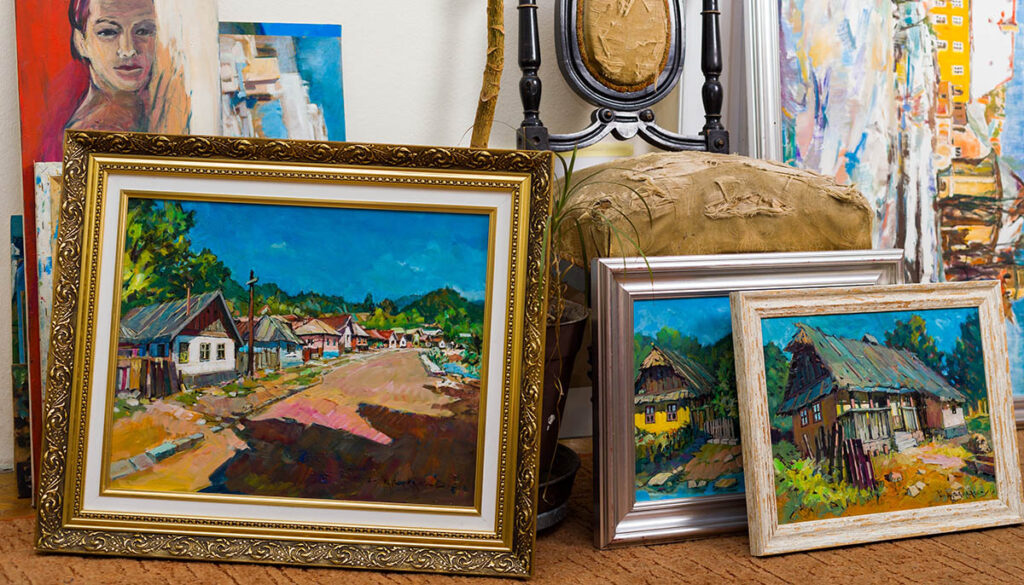
You might be worried that you’ll never be able to find artwork that you like and can afford, but that doesn’t have to be the case. Obviously, none of us are going around buying original Picassos or Monets. But that doesn’t mean original artwork is only for museums or fabulously wealthy collectors.
Most of the pieces in my collection were purchased directly from the artists or thrifted from second-hand shops, auctions, or estate sales. A few were gifts from very talented loved ones, and I cherish them the most, but I also take pride in having found quite a few treasures for next to nothing. You’d be shocked at how much lovely, unique art gets donated to thrift stores or sold for less than $20 at a yard sale.
My favorite “rescue” piece is an oil painting from around the 1930s that I found at a Goodwill outlet. The canvas had taken some damage when it was tossed into the bins, but with a little effort, I was able to hide the worst of it. The framed canvas cost me about six bucks since the outlet store charged by the pound. Someday, I’d like to have it professionally repaired, but in the meantime, it hangs in pride of place beside my bed where I can enjoy it every morning when I wake up.
Supporting Independent Artists
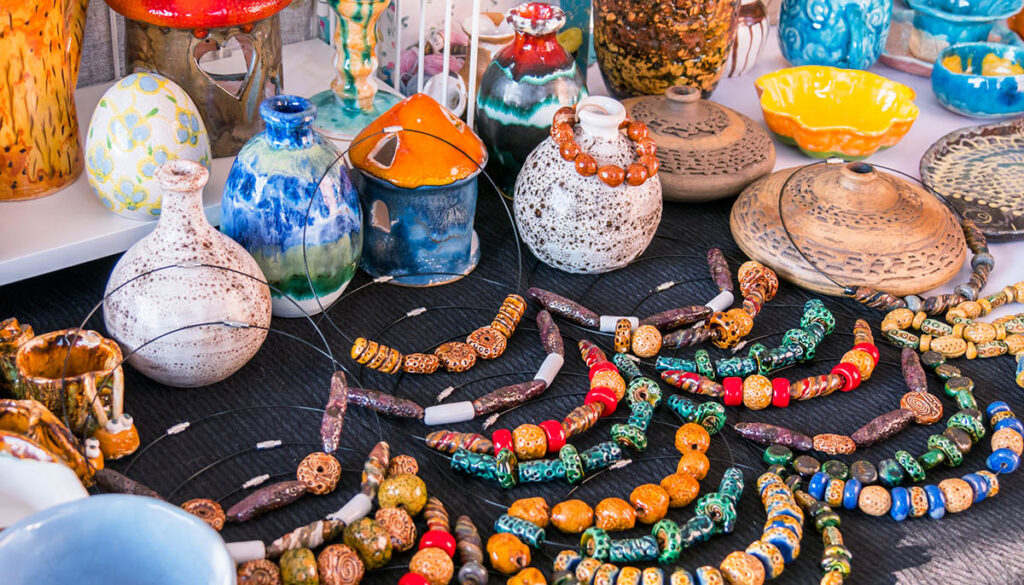
While thrifting is a great way to start building your art collection, please try to support independent artists as well. I would recommend checking out local craft fairs first. Getting to chat with someone about their work and how they create it can be really interesting. If you end up taking home one of their pieces, you’ll have a story attached to it, too!
Another great place to shop for original artwork is Etsy. You’ll find a range of styles–and prices–on the site. I’ve purchased several original drawings from different artists on Etsy, and each time I’ve had a great experience with the sellers. You can even commission a custom piece from some artists on Etsy. Just remember that it will take time and cost more than buying something they’ve already created.
One piece of advice: While you can haggle for a painting or a vase at an estate sale, please don’t ask an artist if they can “do better” on the price. If you really like their work but can’t afford an original piece, buy a print or a notecard instead.
Frames Make All the Difference
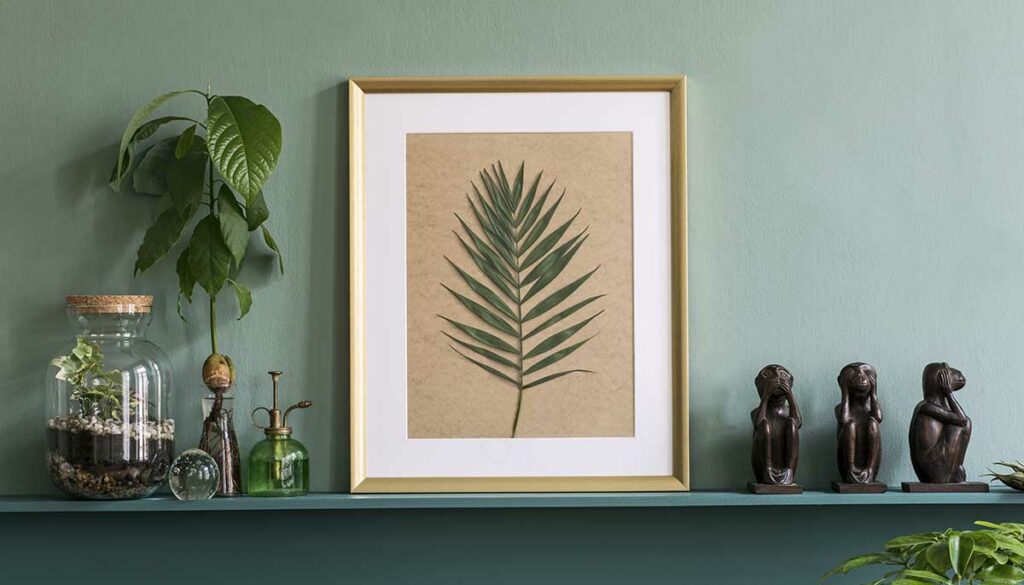
Custom framing can be incredibly expensive–even if you use one of those deep-discount coupons at the craft store. I advise you not to spring for custom framing unless the piece is very, very special to you. Instead, always be on the lookout for inexpensive frames. It’s much cheaper to buy a frame and then get a custom mat cut. You can find vintage frames for a few dollars at thrift shops, or you can stock up the next time the craft store has a buy-one, get-one sale.
IKEA is also a great source for basic frames. I really like their floating frames, which sandwich artwork between two pieces of glass rather than using a mat. This is ideal for pieces that are an odd size. No matter what kind of frame you use, always invest in good-quality archival tape. Regular tape will yellow and crack over time, staining the paper or photograph and leaving glue residue behind.
Finally, I like to use this trick to frame small photos or drawings that don’t quite fit in standard frames. Find a piece of decorative paper (such as scrapbooking paper) that looks good with the piece of artwork. Take apart the frame and use the glass to trace the shape you’ll need to cut out on the paper. Tape it to the backing board of the frame, then use double-sided archival tape to secure the picture on top of the paper. Then reassemble the frame and enjoy your reverse-matted piece of art!
Off the Wall Ideas
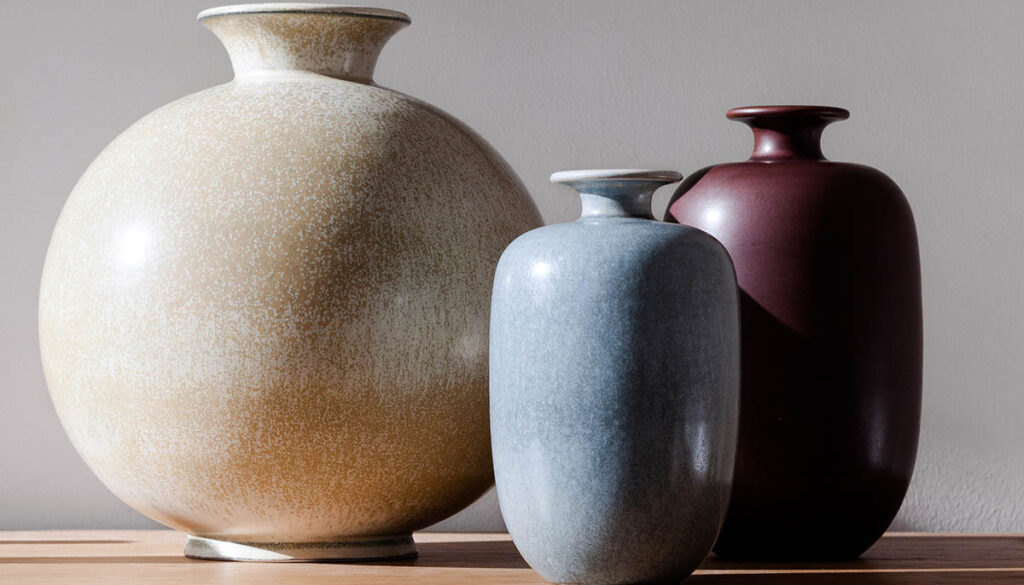
So far, this post has mostly talked about two-dimensional art–paintings, drawings, photographs, and so on. However, there are so many other types of artwork to explore! I really like handmade pottery, and I’ve gotten a couple of pieces from students at a local college. Because they were just starting out, they didn’t charge nearly as much as a gallery. I get to have a wonderful piece of pottery, and they get to fund their continuing development as artists. That’s a win-win.
Ceramics, glass, wood, stone, fiber–there’s somebody out there right now making artwork in a medium that will speak to your heart. One of the best ways to broaden your taste is to read books, browse websites, or watch documentaries about art. You might find that Native American baskets are your new thing, or that you’ve fallen in love with pysanka–Ukrainian folk art Easter eggs. I don’t know your life!
Arranging and Displaying Your Artwork
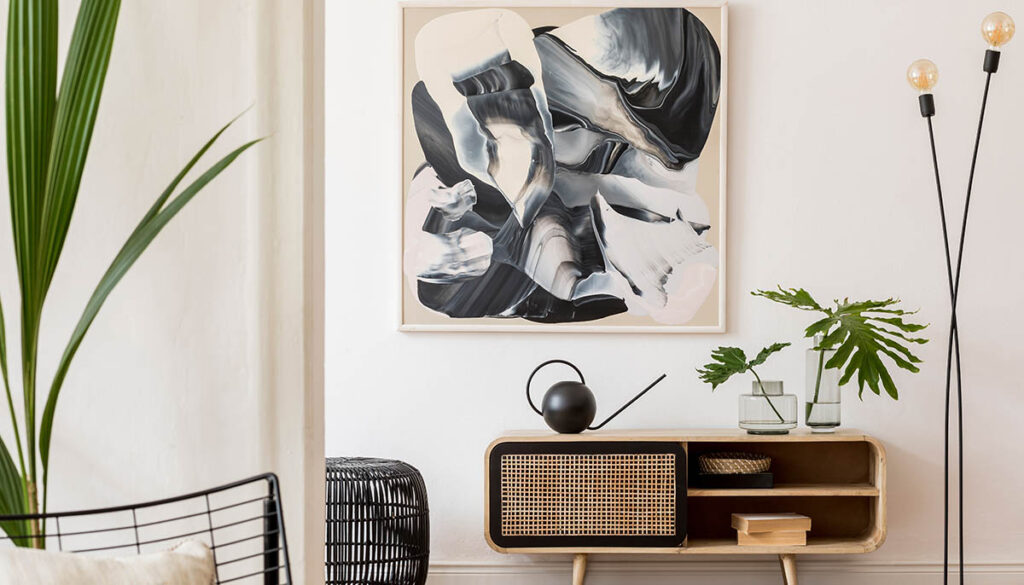
As you build your collection, keep in mind both the size of your living space and the artwork that you already own. If you live in a small apartment, then buying massive canvases will quickly overwhelm your space. On the other hand, buying a lot of small pictures can make it difficult to display them all without looking cluttered and haphazard.
If you do have quite a few small pieces of hanging artwork, a “gallery wall” is a popular way to create a big impact. Always plan your wall first before you start hammering nails! You can use Command strips to temporarily position the frames until you know where you want everything to go. Take a photo with your phone so that you remember the layout, and use a pencil to faintly mark the center top of each frame.
If you’re working with bigger pieces of hanging artwork or three-dimensional items such as vases or sculptures, remember that groupings look best in odd numbers. Three or five is ideal for most groupings of artwork. They don’t all have to be the same size or shape; in fact, displaying items of varying height can add visual interest. Just try not to pile so many items together that you can’t appreciate each of them individually. Arranging artwork is a lot like arranging flowers, and it takes practice to get the hang of it.
Most importantly, remember to buy what you love (within your budget) and cherish what you have. If you take good care of your collection, it could easily become something that you pass down to the next generation.


